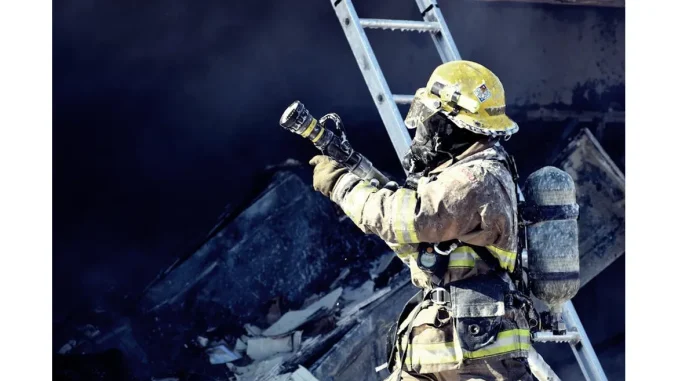
The early hours of 14 June 2017 were marked by a devastating event that would resonate globally. Grenfell Tower in London transformed into an inferno, a harrowing scene that captured the world’s attention. As forty fire engines and 200 firefighters fought the blaze, the fire’s swift ascent from the fourth floor to the pinnacle of the 24-storey structure left an indelible impression on the collective psyche. With the death toll standing at 79 and many still unaccounted for, the tragedy has irreversibly impacted numerous families and ignited a critical discourse on fire safety regulations.
The investigation swiftly pinpointed the catalyst of the disaster: the building’s combustible cladding facilitated the fire’s alarming spread. This cladding, selected for its aesthetic appeal and thermal efficiency, comprised aluminium panels with a void space that created a chimney effect, accelerating the fire’s rapid climb up the exterior. Further scrutiny revealed that the fire’s ignition originated from a Hotpoint FF175BP fridge freezer manufactured by Whirlpool, a revelation that reverberated worldwide and fuelled fears that similar high-rise residential complexes might be at risk.
The Grenfell Tower fire was not a random occurrence; it was a catastrophe that experts had long anticipated. Fire safety officials in the United Kingdom had issued multiple warnings about the perils of cladding wrapped in combustible materials. While these materials enhanced energy efficiency and aesthetics, they posed significant fire risks. Dr Barbara Lane, a fire safety engineer, starkly stated, “The tragedy at Grenfell Tower was a disaster waiting to happen. The warnings were there, but they went unheeded. The cladding turned the building into a tinderbox.”
The human toll was profound. Survivors recounted harrowing tales of escape, while families mourned the unimaginable loss of their loved ones. The emotional scars run deep, and the community continues to grapple with grief and anger. “I lost my entire family in that fire,” one survivor tearfully recalled. “It’s something I will never get over.” In the aftermath, the calls for justice and accountability grew louder, with many demanding answers from those responsible for allowing the building to become a death trap.
In stark contrast, the United States has largely avoided such incidents, thanks to stringent fire safety standards like NFPA 285. This standard, developed in response to the increasing use of combustible materials in exterior construction, evaluates wall assemblies to ascertain their capacity to resist a self-accelerating or self-spreading fire up an exterior wall. Aaron Johnson, a fire strategist at The Expert Institute, remarked, “The NFPA 285 standard has been a game-changer in fire safety. It’s the reason we haven’t seen Grenfell Tower-like fires here in the U.S.”
Nevertheless, a growing controversy surrounds efforts to reduce or eliminate these safety standards in favour of greener building materials. Advocates for green building and energy conservation argue that plastics, which are more environmentally friendly, should be permissible in exterior walls without stringent testing. This push has gained traction in states such as Washington, D.C., Massachusetts, Indiana, and Minnesota, where local code adoption processes have succeeded in reducing or eliminating NFPA 285 requirements. This has sparked outrage among fire safety professionals, who warn that such changes could lead to catastrophic consequences.
The Grenfell Tower fire underscores the critical importance of stringent fire safety standards. The use of combustible cladding, chosen for its energy efficiency and aesthetics, proved disastrous. While the NFPA 285 standard has been instrumental in preventing similar incidents in the U.S., the push to reduce these standards in the name of green building and energy efficiency poses significant risks. The controversy highlights the tension between environmental concerns and safety standards. While it’s essential to pursue greener building practices, it should not come at the expense of human lives.
Looking ahead, the future of fire safety in high-rise buildings hinges on finding a balance between environmental sustainability and stringent safety standards. The Grenfell Tower fire has already prompted a re-evaluation of building materials and safety protocols in the U.K., and similar reviews are likely to occur globally. In the U.S., the debate over NFPA 285 requirements will continue to be contentious. Fire safety advocates will undoubtedly push back against any attempts to weaken these standards, but the influence of green building proponents cannot be underestimated.
Innovations in building materials may provide a solution, with the development of fire-resistant, eco-friendly alternatives. Research and development in this area will be crucial in ensuring that buildings can be both sustainable and safe. In the meantime, fire safety must remain a priority, and the lessons learned from Grenfell Tower should not be ignored. The Grenfell Tower fire serves as a stark reminder that fire safety cannot be compromised, even as we advance towards a more sustainable future. The world must heed these warnings and take proactive measures to ensure such a disaster never occurs again. Balancing environmental sustainability with fire safety is a delicate and essential equilibrium to protect lives and avert future tragedies.


Be the first to comment